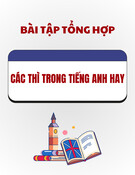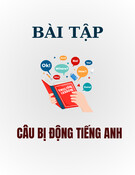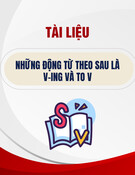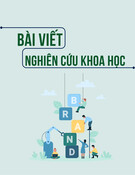
Chapter 4: How to describe
learning & teaching
Harmer, J. (1999). How to teach English. Longman

1. Concepts about language learning &
teaching
Adults: learning w/o studying if in the right
kind of contact
Children & adults similarly acquire
language successfully outside the
classroom:
First, being exposed to the language
Second, motivated to learn to communicate
Third, having opportunities to use the
language they have just learned

2. Elements for successful language
learning in the classroom
Engage
Study
Activate

Engage
Aims
Arousing learners’ interest & involving their
emotions
Activities & Materials:
Games (depending on ages, types)
Music
Discussion
Pictures
Stories/anecdotes

Study
Main focus:
the construction of the language
Activities
Pronunciation practice
Grammar presentation
Structure/grammar drills
Vocabulary presentation/practice
Reading a text (content/language)


![Bài tập thì hiện tại hoàn thành [kèm đáp án chi tiết]](https://cdn.tailieu.vn/images/document/thumbnail/2025/20251106/thuthao27062004/135x160/41601762420911.jpg)






![Tài liệu ôn tập Ngữ pháp tiếng Anh [chuẩn/mới nhất/tổng hợp]](https://cdn.tailieu.vn/images/document/thumbnail/2025/20250821/vuongdinhlinh1412@gmail.com/135x160/933_tai-lieu-on-tap-ngu-phap-tieng-anh.jpg)




